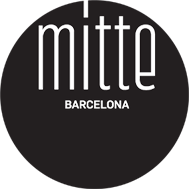Anuar Khalifi born in 1977 in Lloret de Mar, Spain. Works and lives in Tangier, Morroco.
The simple act of putting lines, colours and all sorts of materials on a vertical surface such as a still canvas, can be perceived with an emotional palette that moves from hate and stiffness towards mistery and acceptation. Of course this is part of the viewer’s business and it relates to the attitude and experiences he has made himself of creative languages and art in general. Despite the emotions a painting can generate, there’s a common belief about what a painting cannot be: a gesture of social, historical and political engagement.
Apart from the 80’s Realism and then taking in account Picasso’s Guernica and the hyperrealism of some american recent artistic ventures, most of the rest is escape, psychological insight and pure abstraction which has birth in the painter’s studio and there it walks back. Luckily it happens that street art in the 70’s wasn’t born in artist’s studios; it’s something natural to street art being a mirror of social environment and everyday life in urban streets. There can be some romanticism but it’s still about the reality of cities, of social classes and relationships, of people mo- vements, fear and anxiety. It’s exactly between these two faces where the work of Anuar Khalifi is placing itself. Paintings having a fight with Pop expressionism while they address some social and public issues, maybe not that familiar to those that are not in the north-south ongoing struggle.
Human body is the arena where this challenge is taking place and Khalifi doesn’t choose a contender winning and another losing the fight. His young boys, who are given more nordic than arab features, aren’t there to dream and claim in silence their desperation. On the contrary they live few seconds before they start something, we can always expect some sort of action is about to arrive even if isn’t yet depicted… Guess what? it’s about us, the viewers, to complete the story.
Marcello Bellan
ANUAR KHALIFI
Anuar Khalifi born in 1977 in Lloret de Mar, Spain. Works and lives in Tangier, Morroco.
The simple act of putting lines, colours and all sorts of materials on a vertical surface such as a still canvas, can be perceived with an emotional palette that moves from hate and stiffness towards mistery and acceptation. Of course this is part of the viewer’s business and it relates to the attitude and experiences he has made himself of creative languages and art in general. Despite the emotions a painting can generate, there’s a common belief about what a painting cannot be: a gesture of social, historical and political engagement.
Apart from the 80’s Realism and then taking in account Picasso’s Guernica and the hyperrealism of some american recent artistic ventures, most of the rest is escape, psychological insight and pure abstraction which has birth in the painter’s studio and there it walks back. Luckily it happens that street art in the 70’s wasn’t born in artist’s studios; it’s something natural to street art being a mirror of social environment and everyday life in urban streets. There can be some romanticism but it’s still about the reality of cities, of social classes and relationships, of people mo- vements, fear and anxiety. It’s exactly between these two faces where the work of Anuar Khalifi is placing itself. Paintings having a fight with Pop expressionism while they address some social and public issues, maybe not that familiar to those that are not in the north-south ongoing struggle.
Human body is the arena where this challenge is taking place and Khalifi doesn’t choose a contender winning and another losing the fight. His young boys, who are given more nordic than arab features, aren’t there to dream and claim in silence their desperation. On the contrary they live few seconds before they start something, we can always expect some sort of action is about to arrive even if isn’t yet depicted… Guess what? it’s about us, the viewers, to complete the story.
Marcello Bellan
